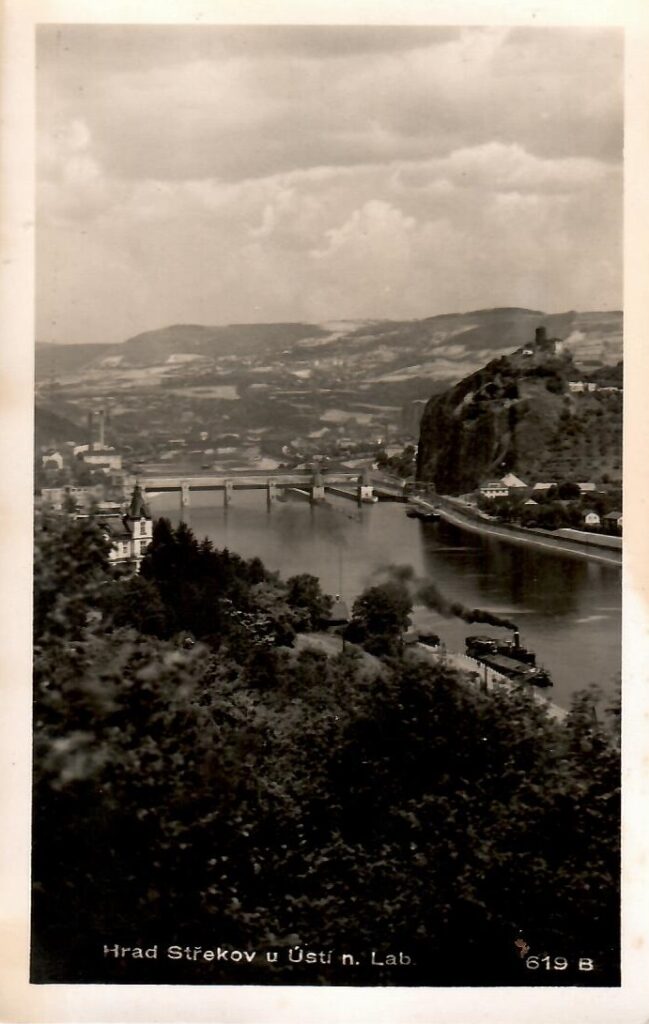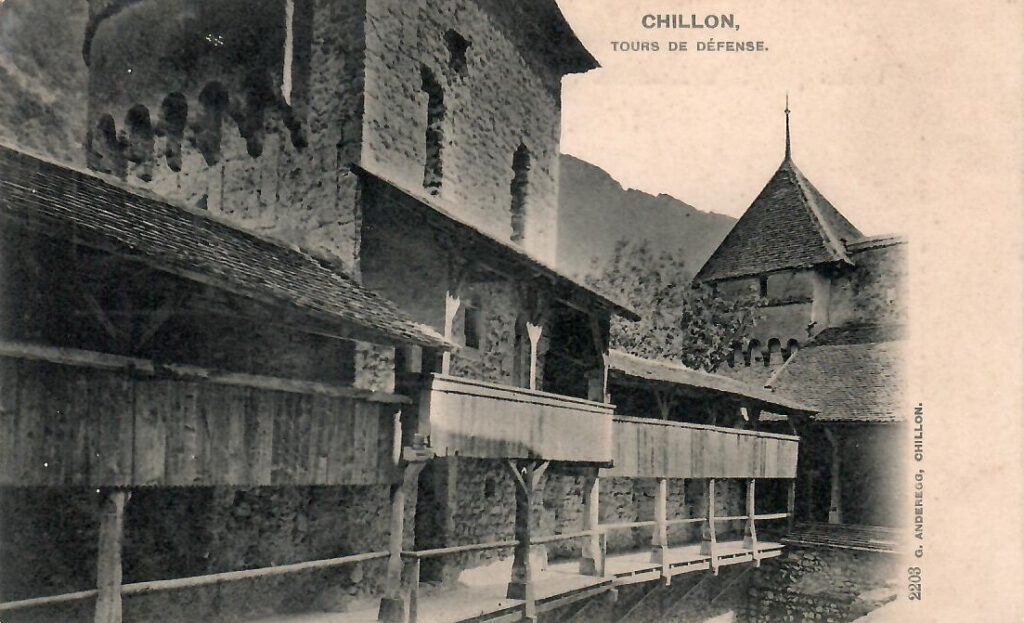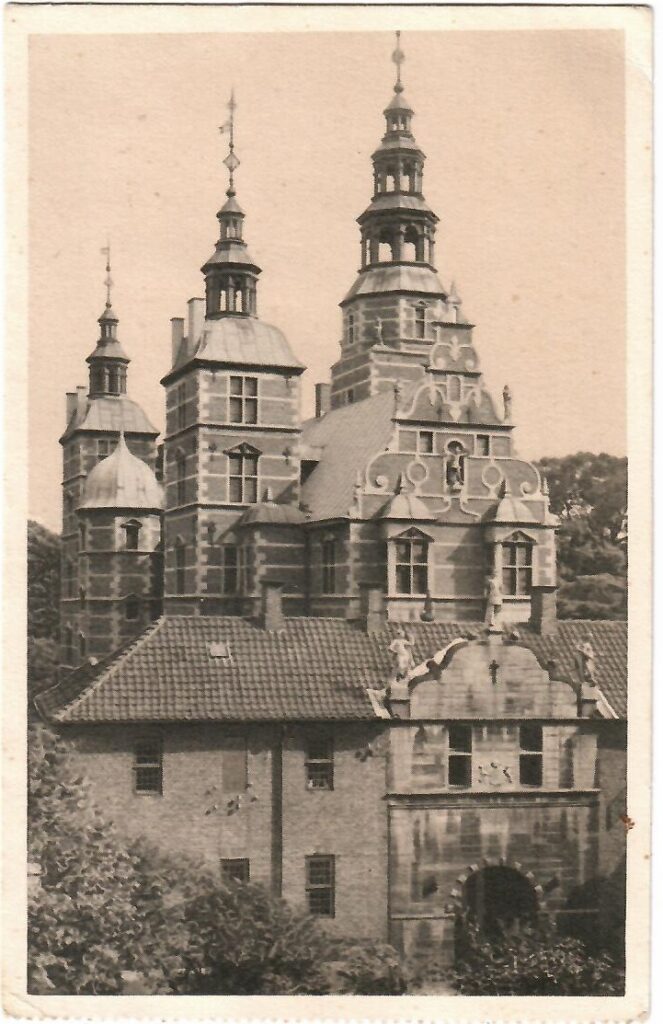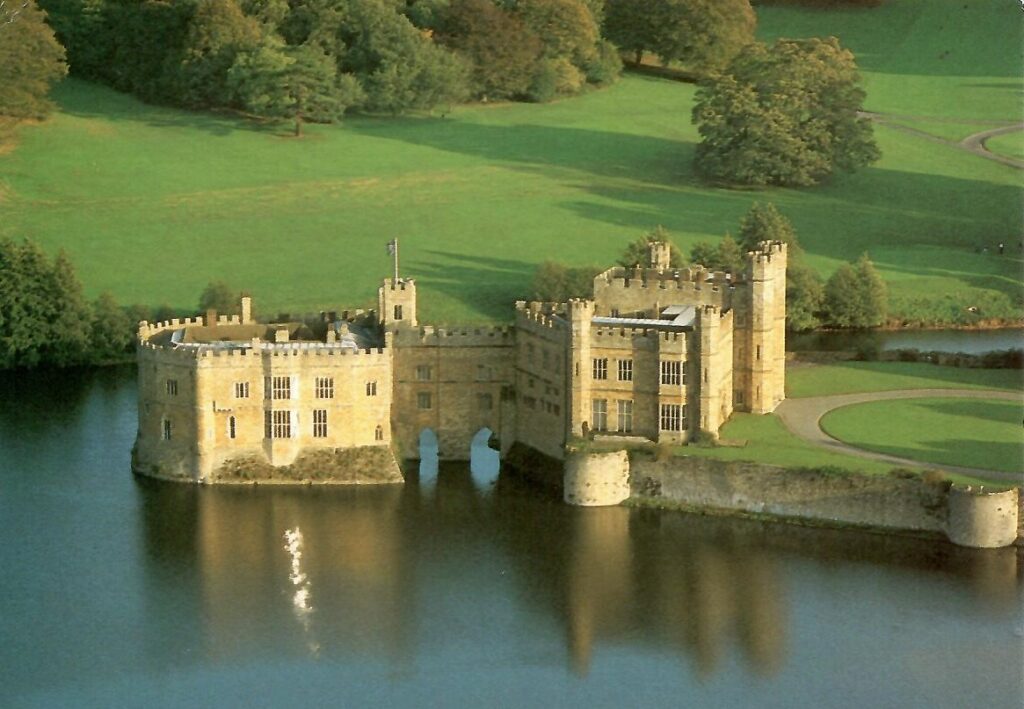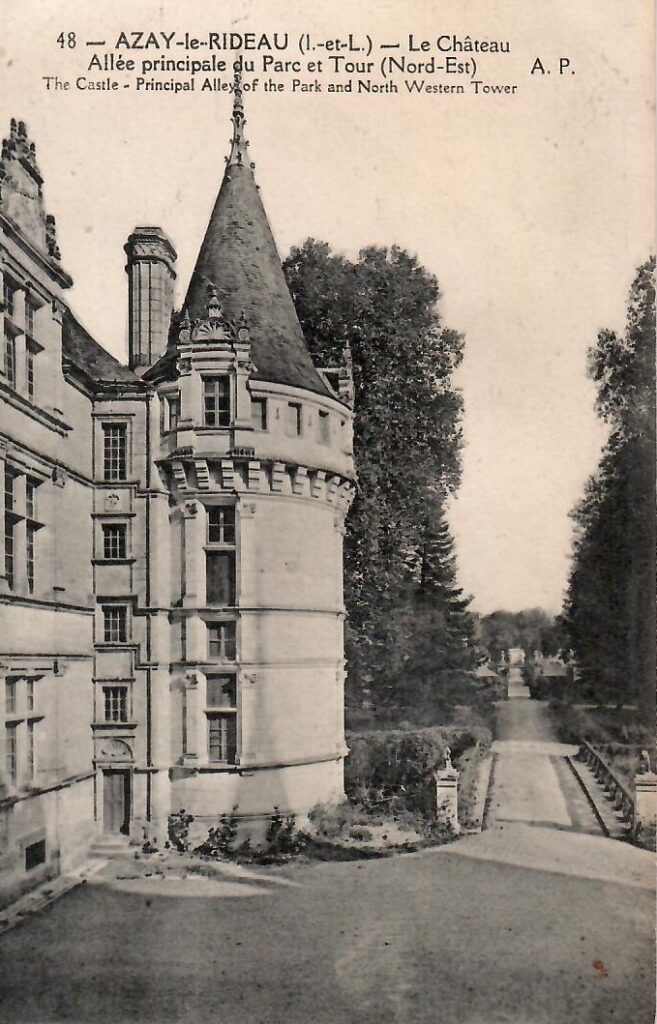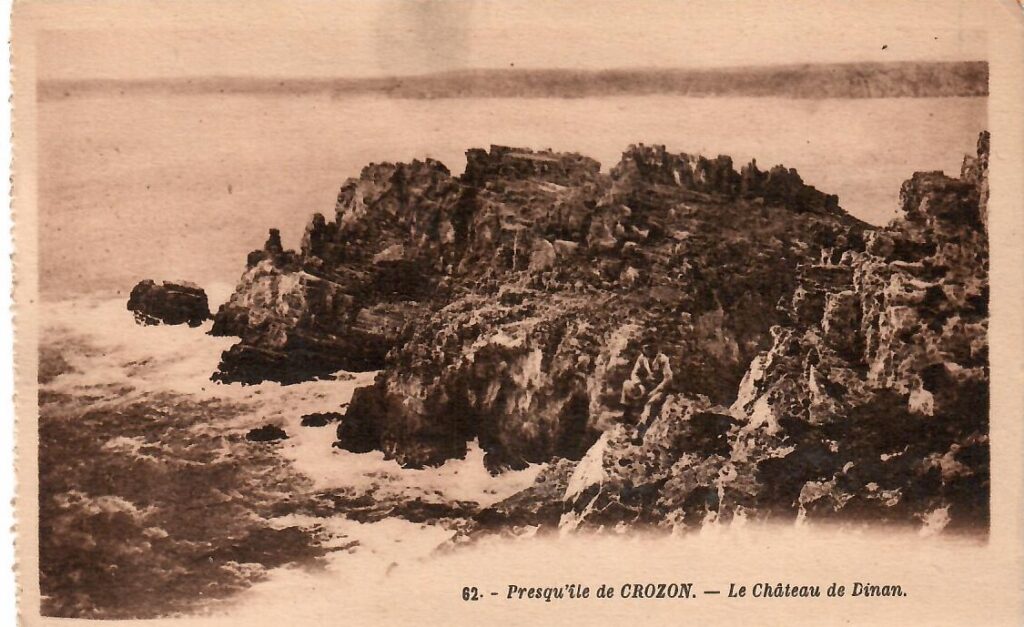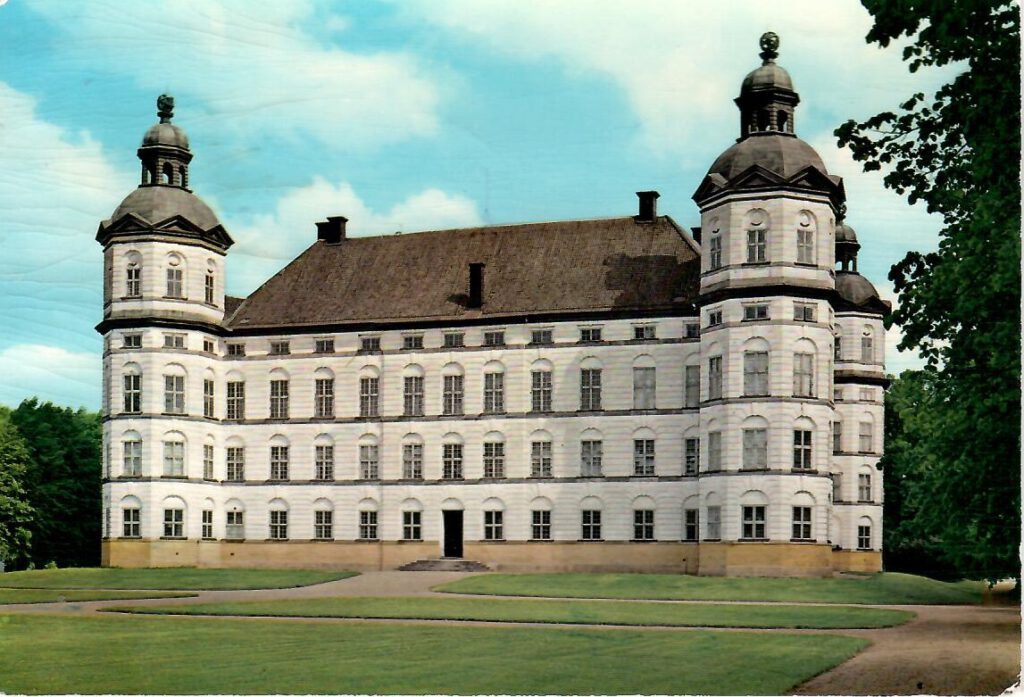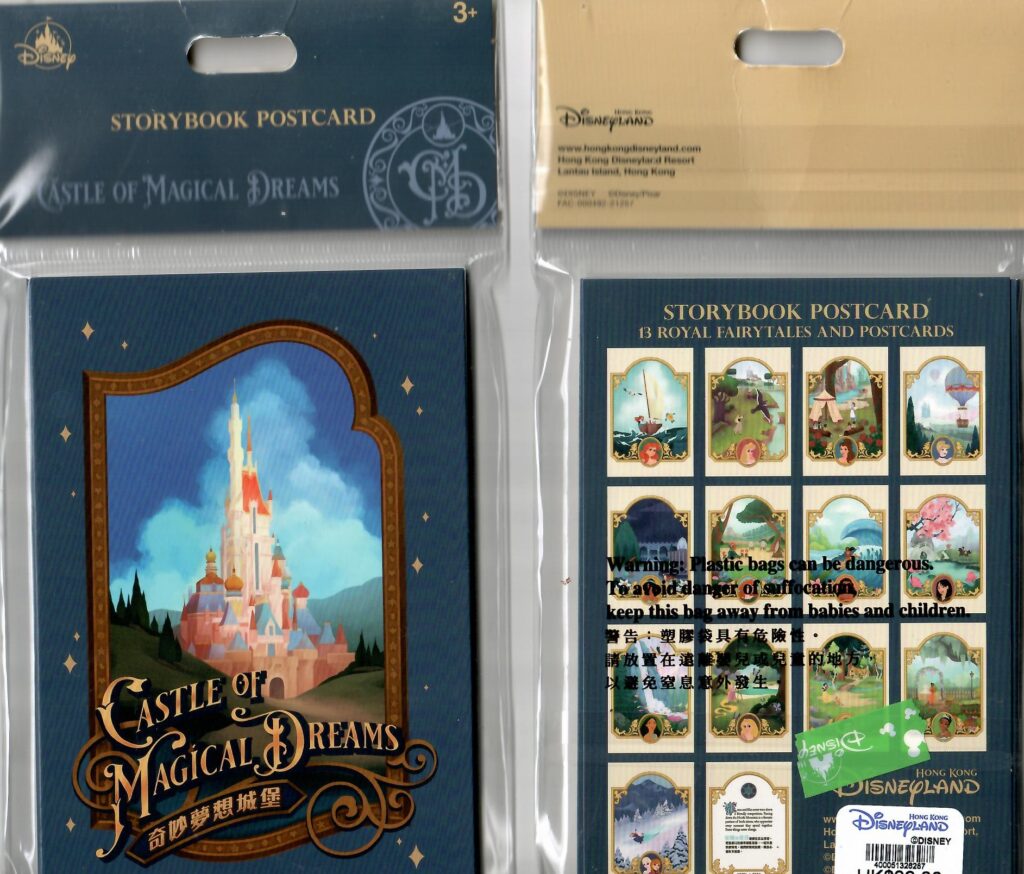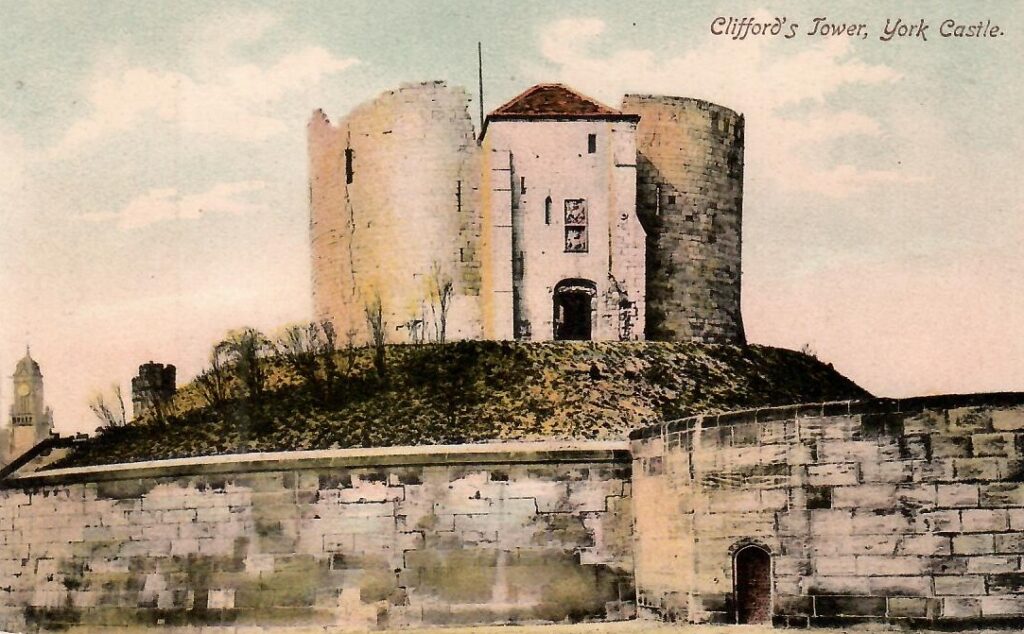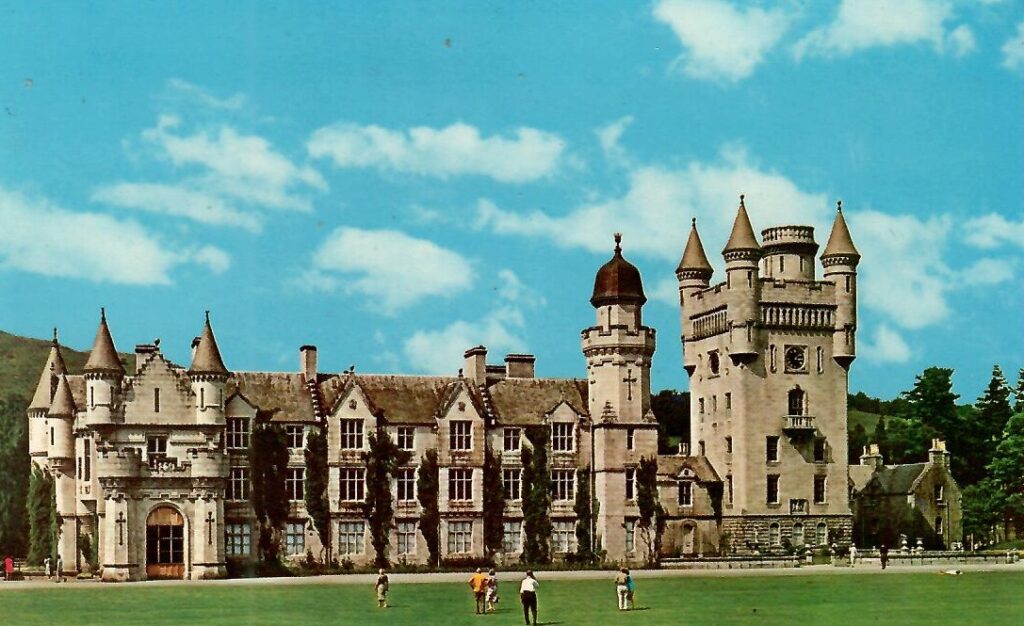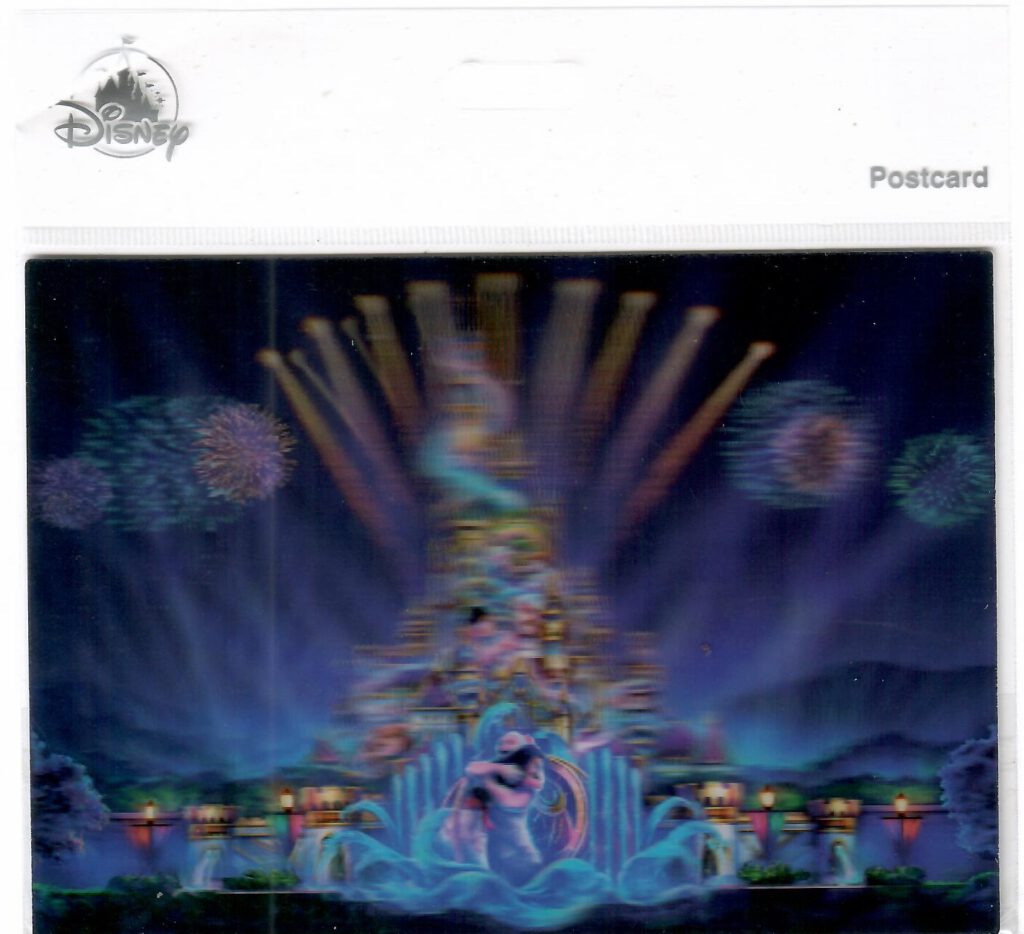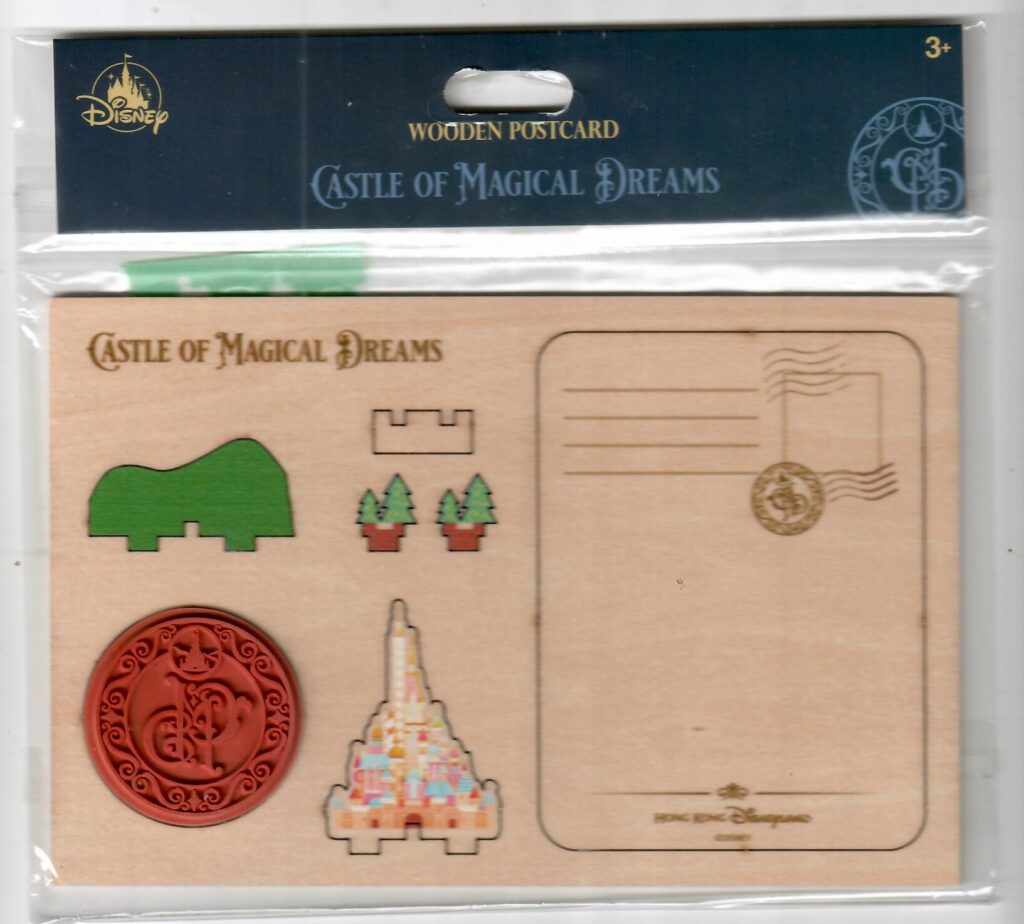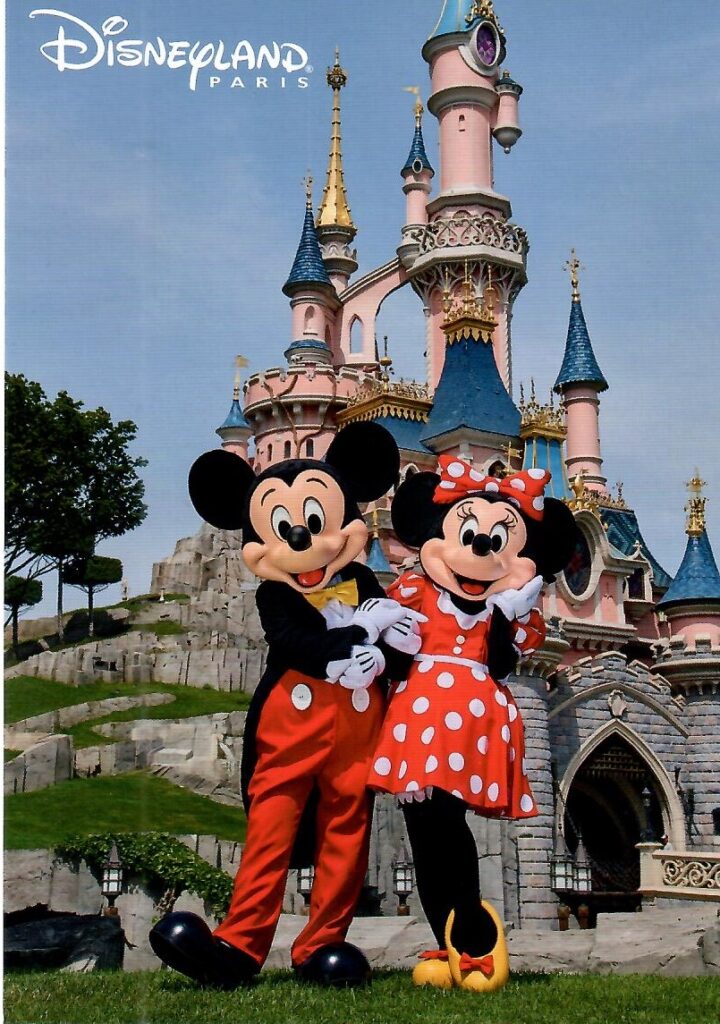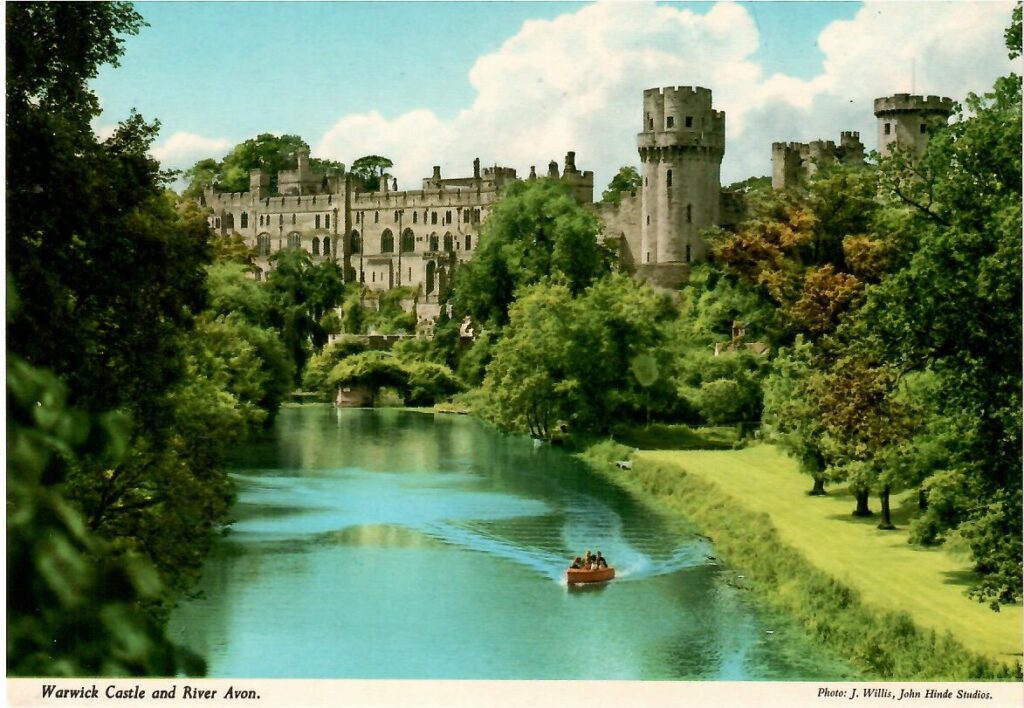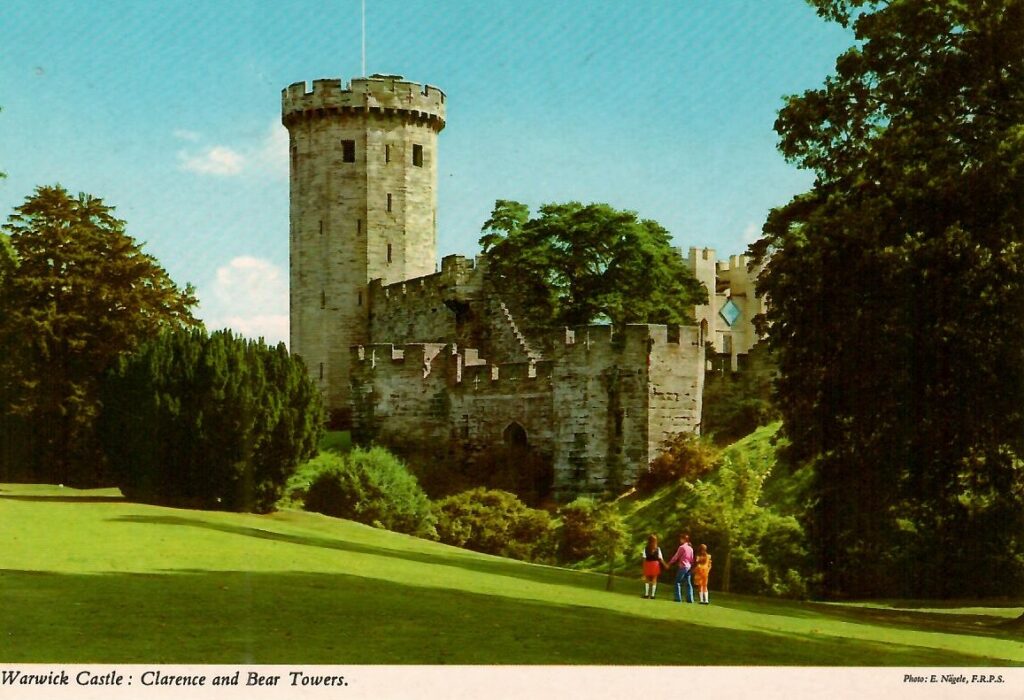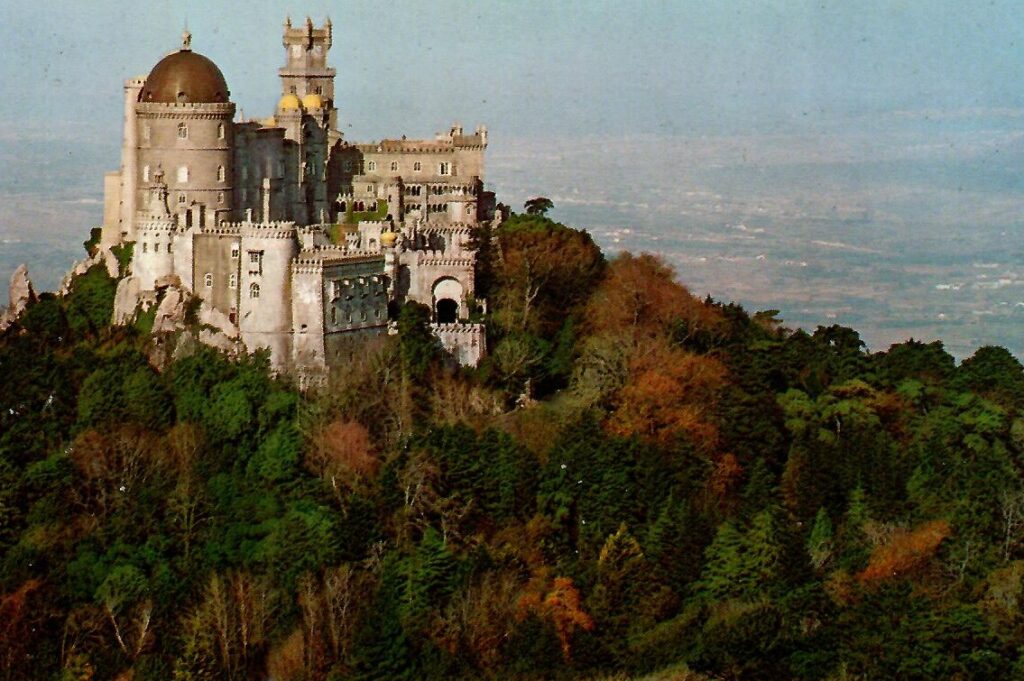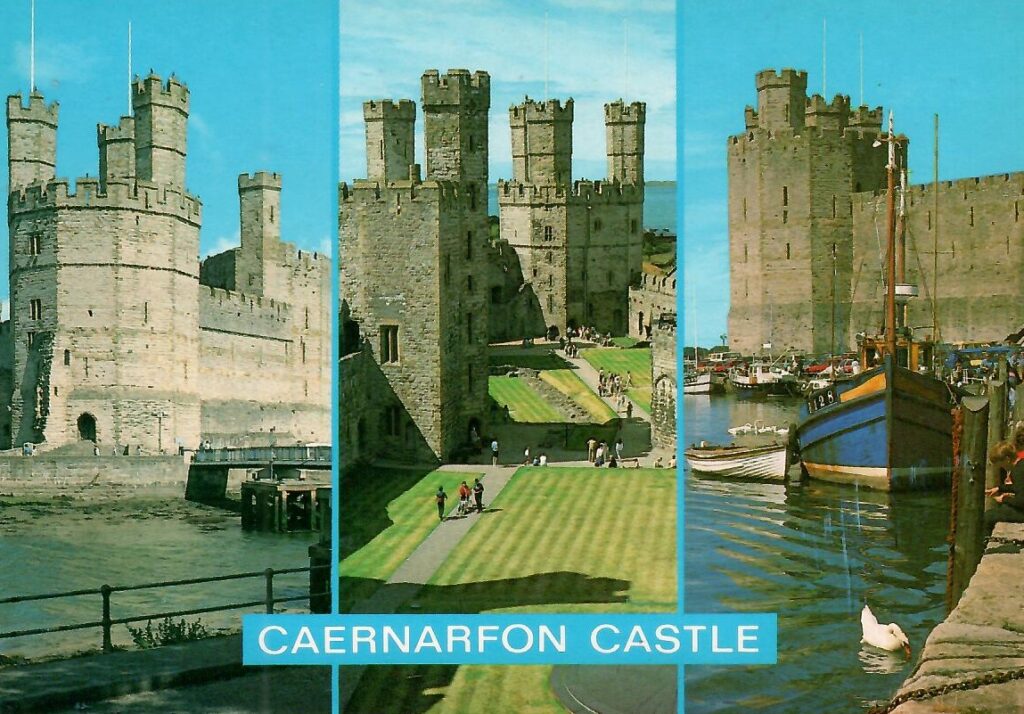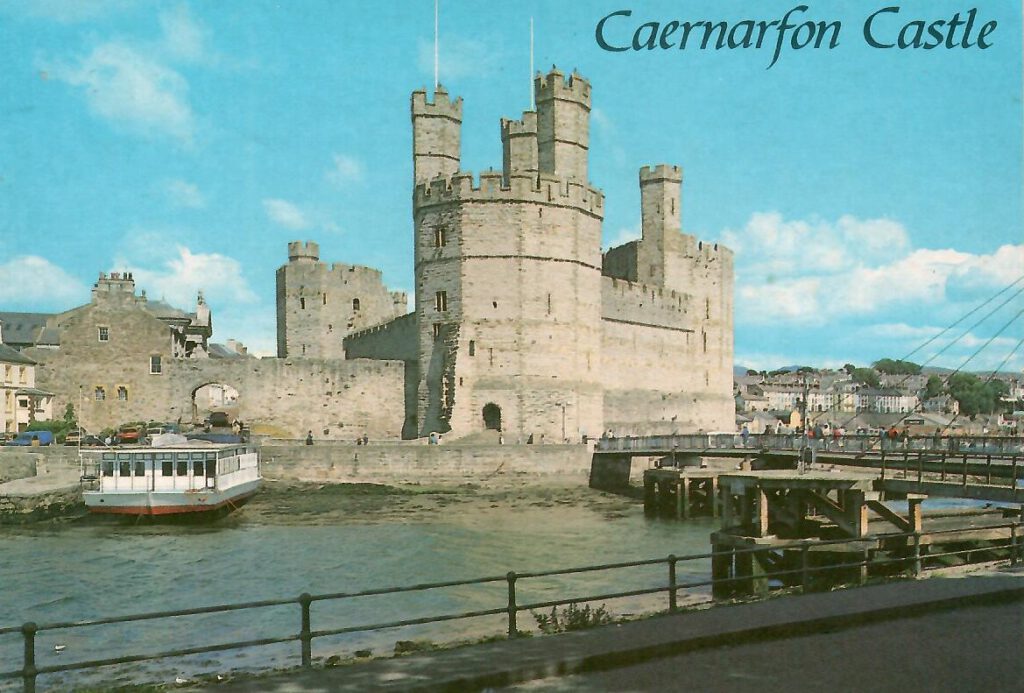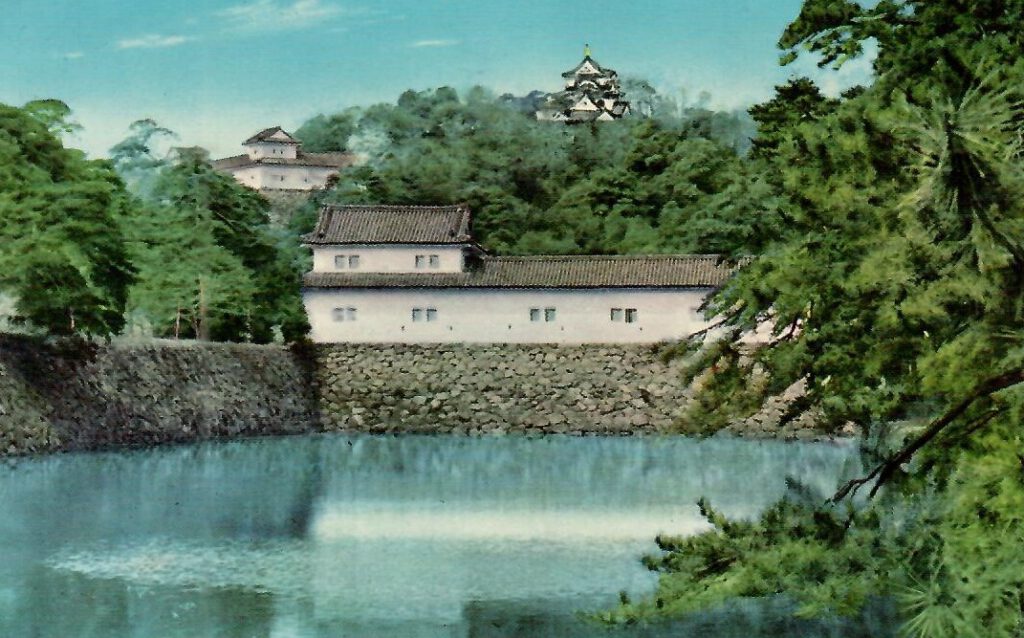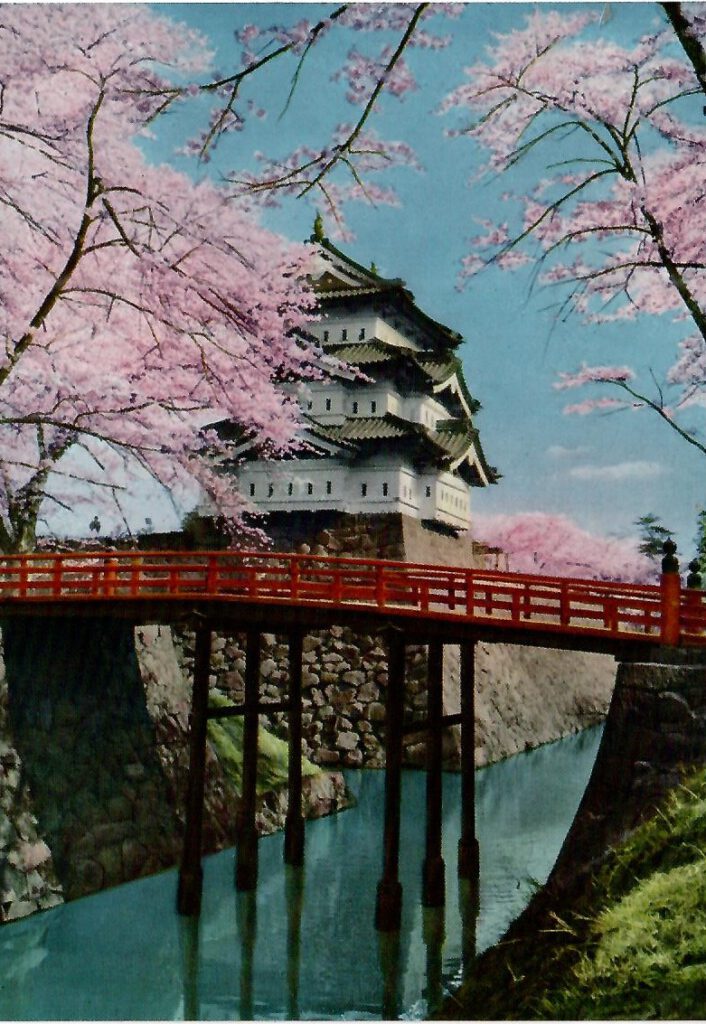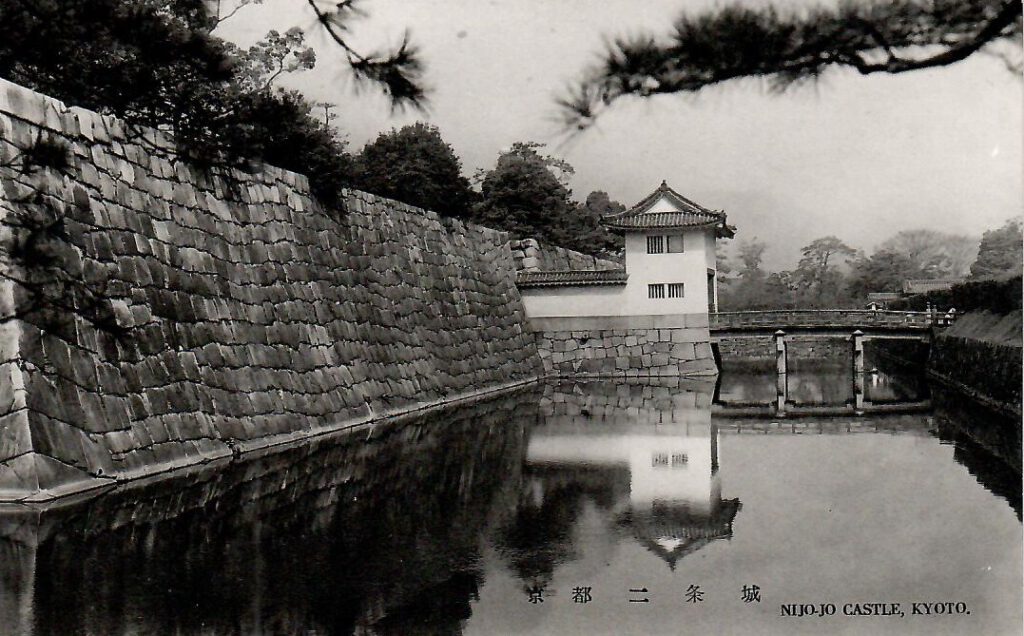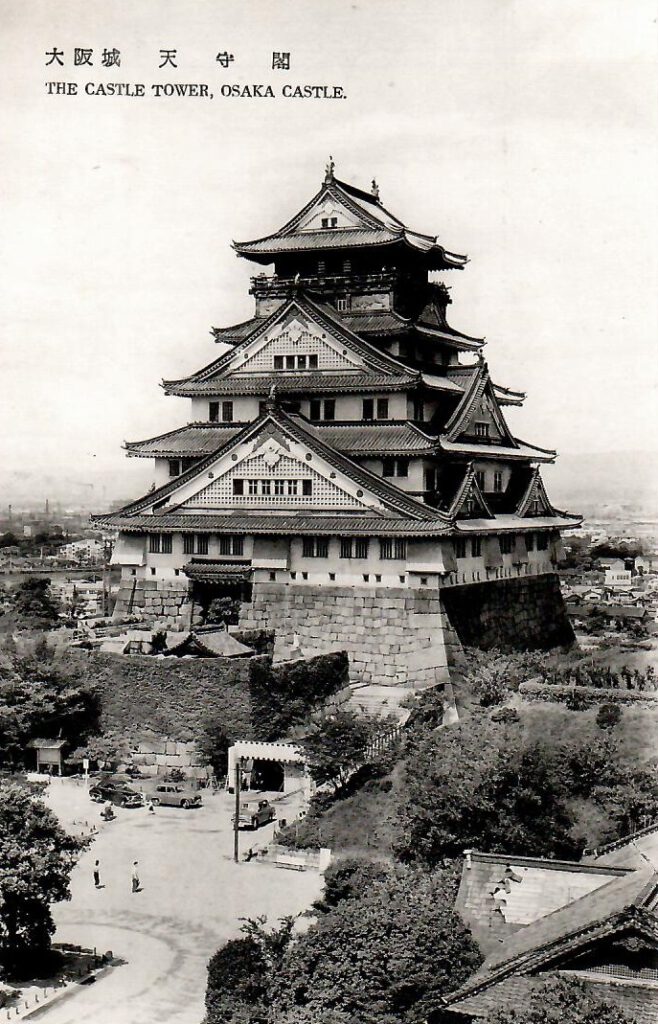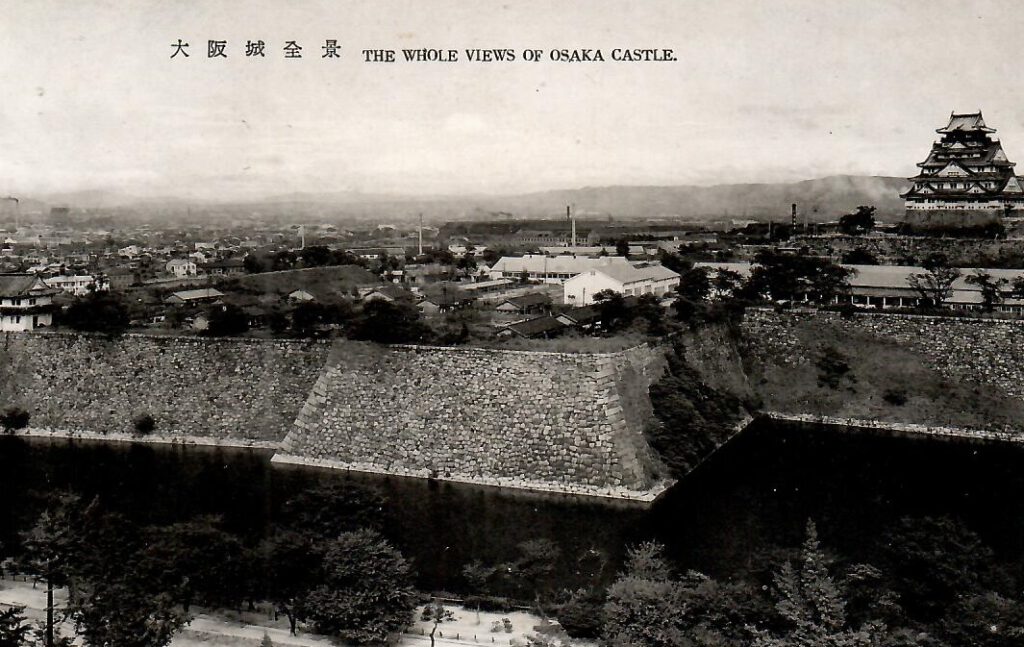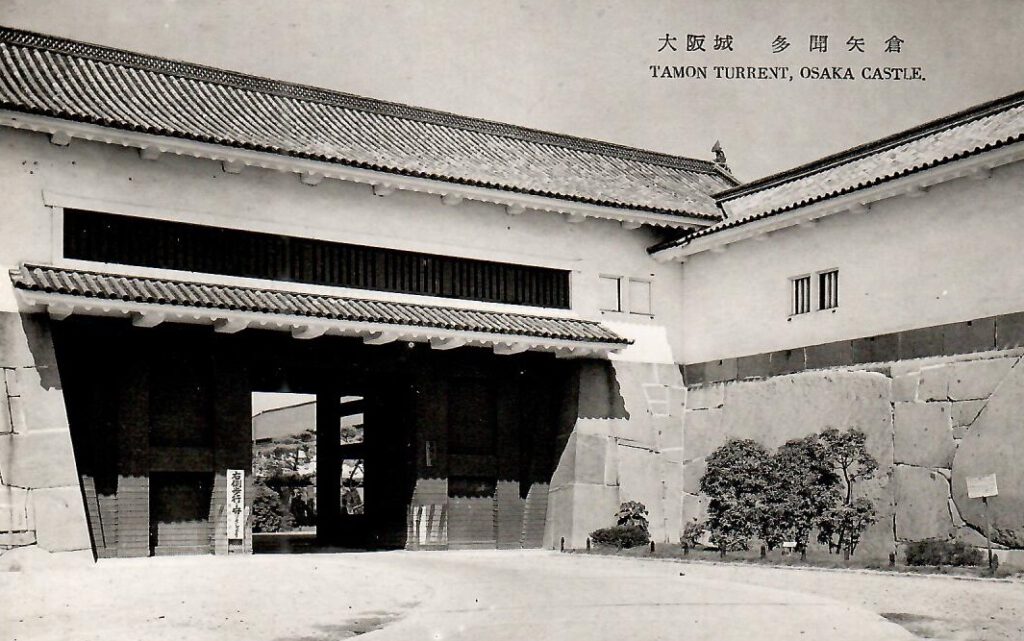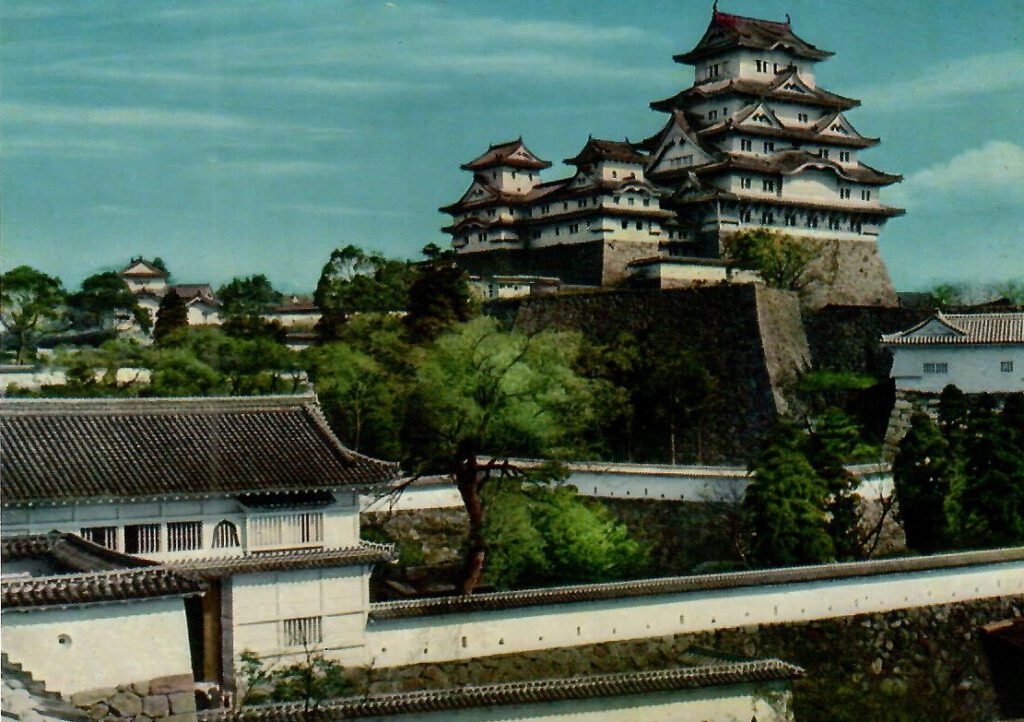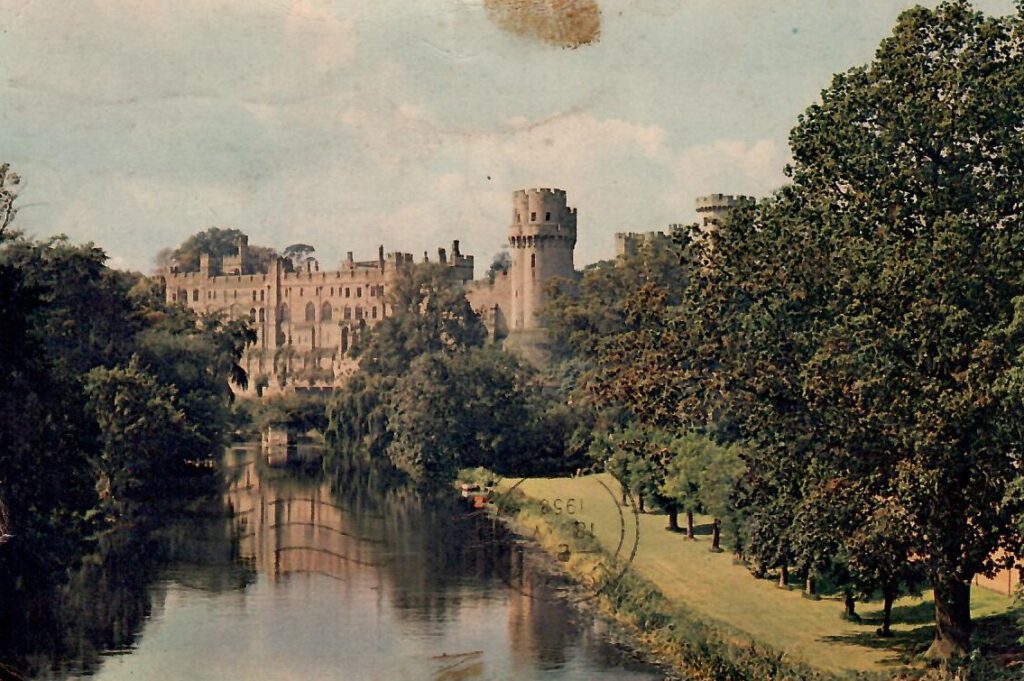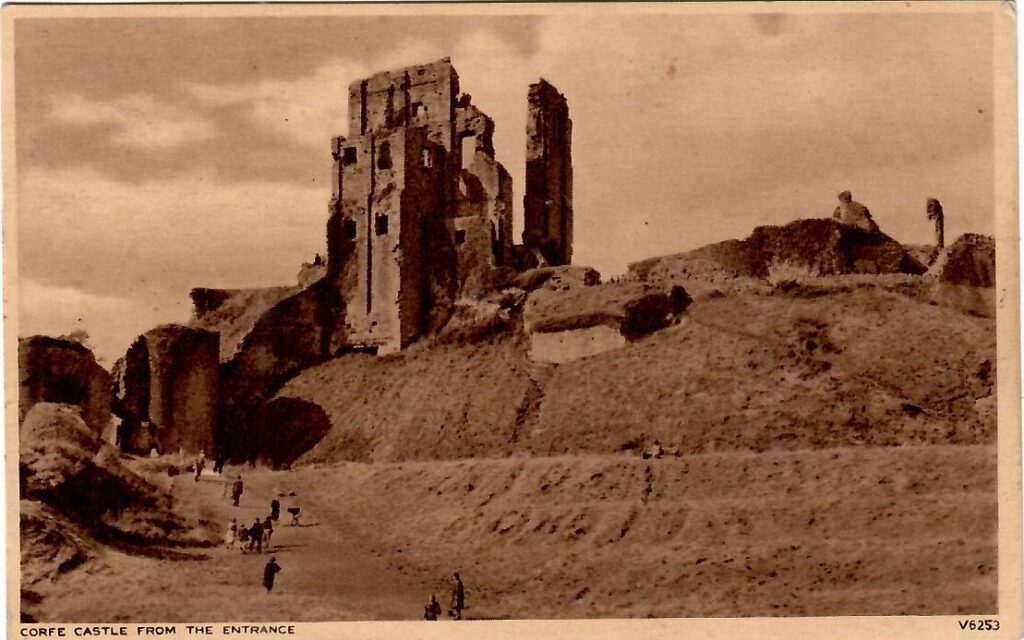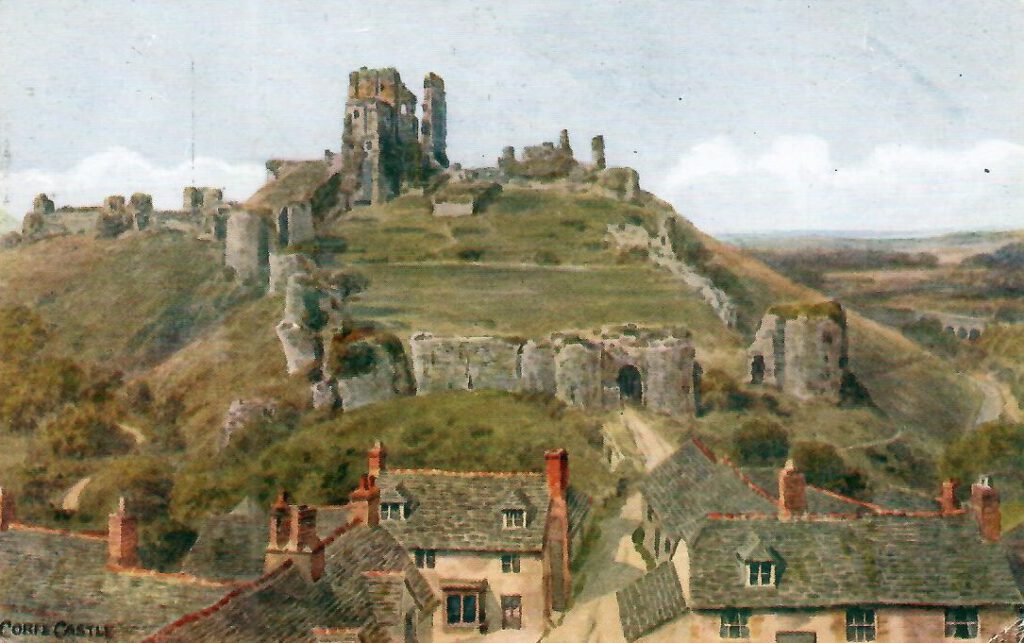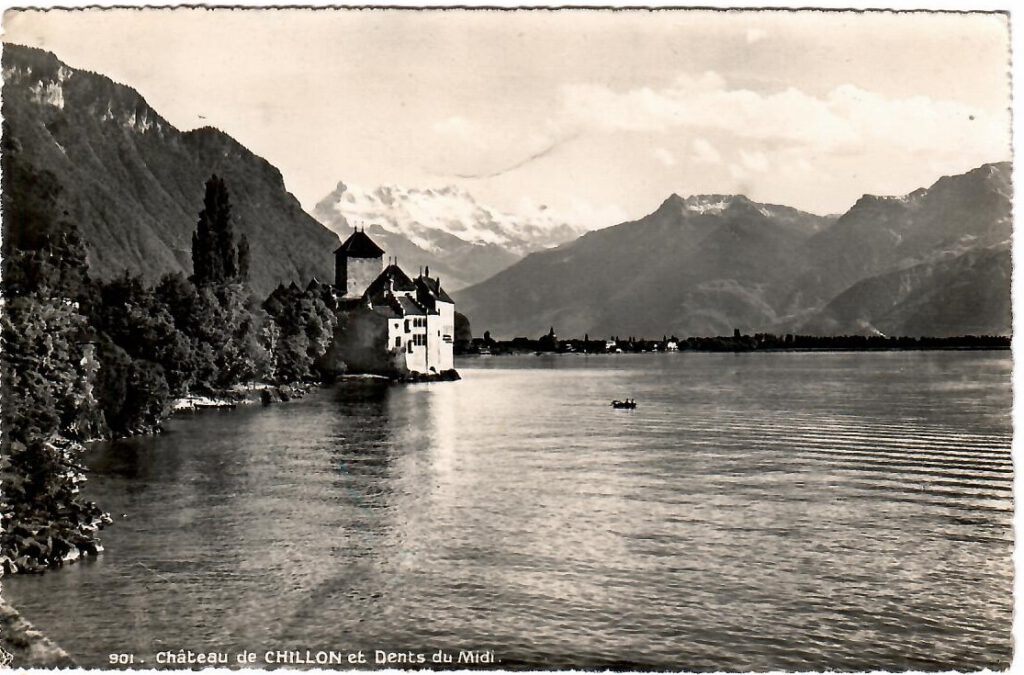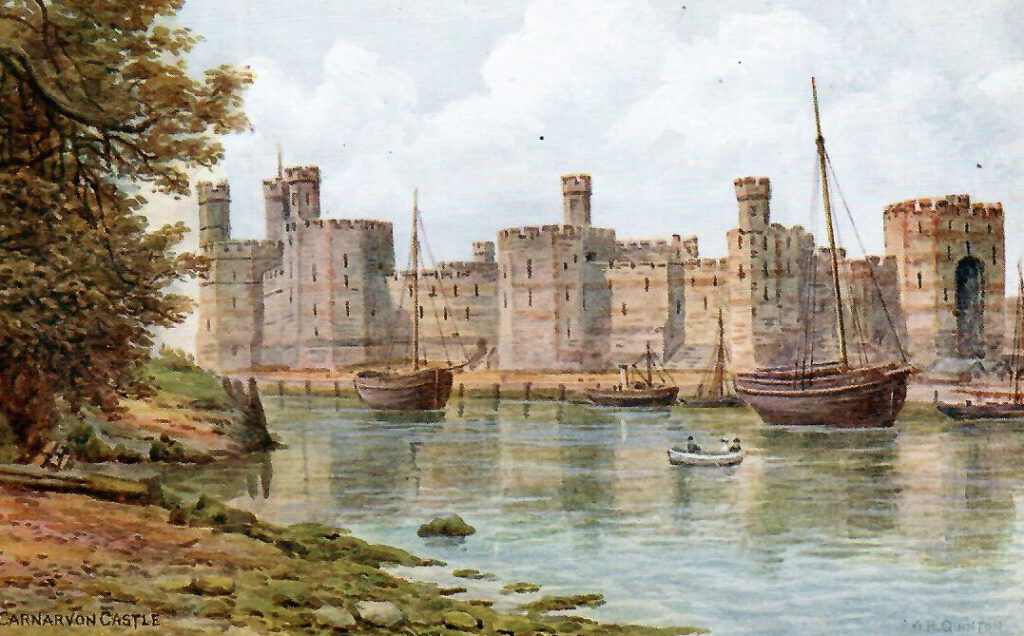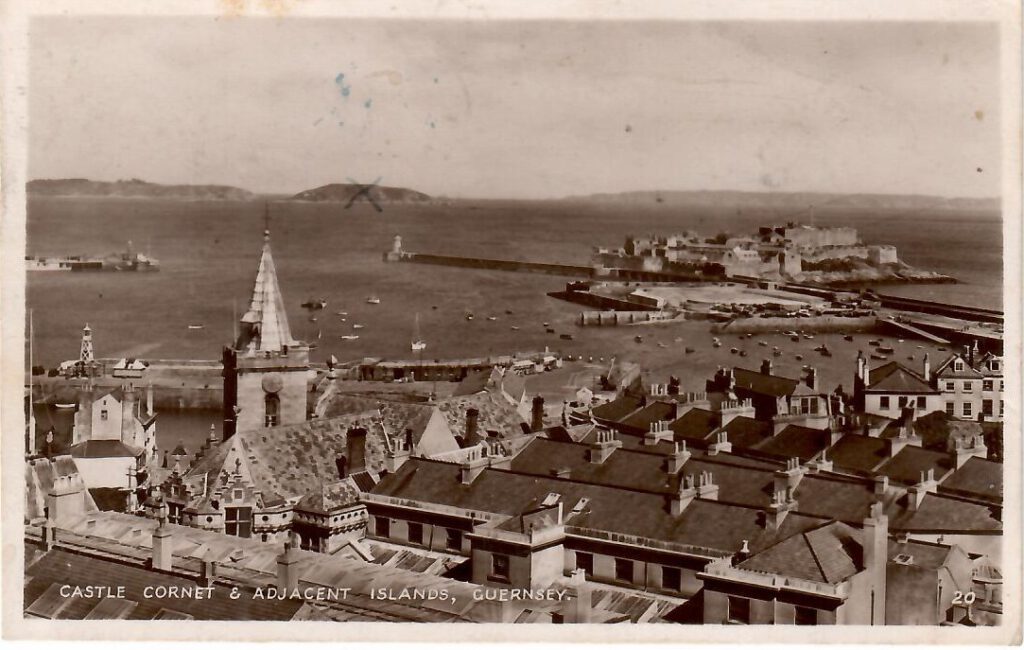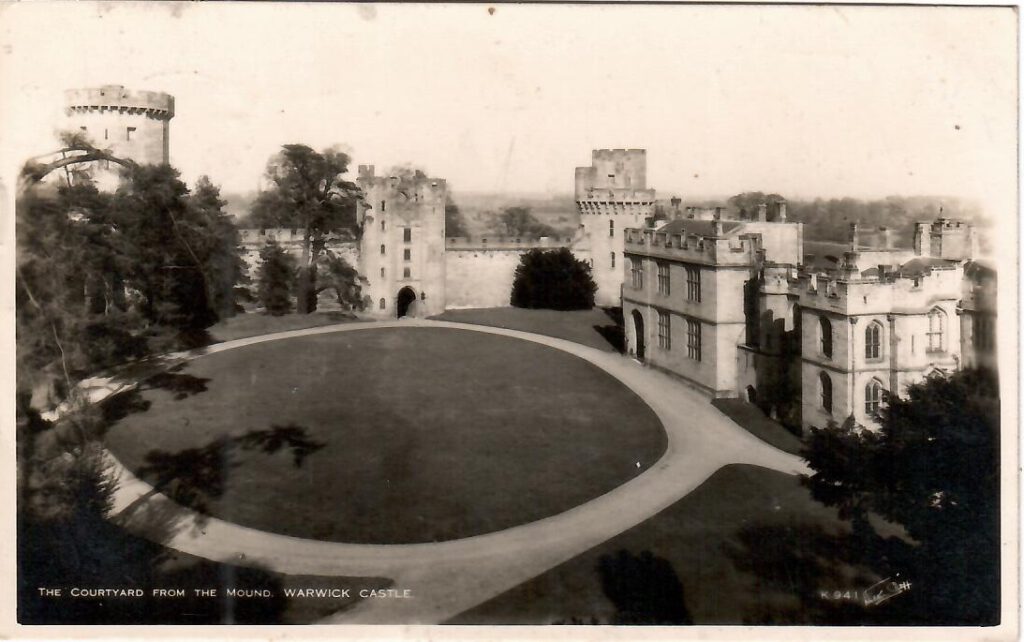-
Usti nad Ladem, Strekov Castle (Czech)
Unused, real-photo card. Grade: 1
-
Chillon, Tours de Defense (Switzerland)
Undivided back, B&W unused entry having an almost medieval outlook. Grade: 2
-
Kobenhavn, Rosenborg Slot (Denmark)
Known in English as Rosenborg Castle, a renaissance castle originally built as a country summerhouse in 1606 as an example of Christian IV’s architectural projects. It was built in the Dutch Renaissance style, typical during this period, and has been expanded several times, evolving into its present condition by 1624. This unused old sepia card has notable foxing on the reverse, and a perforated edge indicating that it had been part of a set long ago. Grade: 2
-
Warwick Castle, The Barbican (England)
Terrific old, unused, sepia, real-photo postcard. We won’t assume what you do or don’t know, but for our own benefit and probably that of many non-British persons, we can tell you that a barbican is the outer defence of a castle or walled city, especially a double tower above a gate or drawbridge. Grade: 1
-
Warwick Castle, The Great Hall (England)
Unused, sepia, Walter Scott real-photo card K 867. Grade: 1
-
Maidstone, Leeds Castle (England)
Unused card, though the white area in the water below the left side of the castle is an abrasion on the card. Grade: 5
-
Azay-le-Rideau, The Castle- Principal Alley of the Park and North Western Tower (France)
Castles to the right of us, castles to the left of us, and castles popping up constantly in the postcards we scan. This very old B&W-verging-on-sepia card is unused and clean. Grade: 1
-
Le Chateau de Blois (France)
The Royal Château of Blois in addition to having been the residence of the Counts of Blois and some French Kings, Joan of Arc also went there by 1429 to be blessed by the Archbishop of Reims before departing with her army to drive against the English. The château effectively controlled the Kingdom of France between 1498 and 1544 and comprises several buildings, whose construction began in the 13th century and ended in the 17th century. In total, there are 564 rooms, including 100 bedrooms with a fireplace in each, and 75 staircases — although we learn, somehow, that only 23 were used frequently. So there you go, on this unused but highly aged and heavily handled vintage postcard. Grade: 3
-
Semur, La Rue Chaude et le Donjon (France)
Granted that this unused card is highly aged, looks ancient, and is missing a small tip of the upper left corner. But the photo, if any place looks medieval, this did. Of course flash forward ten centuries or so, and the place has been touristed up a bit. A top-ranked Google website reports that “In 2010, after being closed for a long time, the basement of the Orle d’Or Tower once again became accessible. The Sciences Society helped greatly in the reconstruction of its landing stage, where the sentinels were situated. This historic place makes clear the medieval role of the tower, which was difficult to understand after Henry IV ordered the demolition of the keep following the construction of the Joly Bridge.” This is a most atmospheric postcard. Grade: 3
-
Presqu’ile de CROZON – Le Chateau de Dinan (France)
What a weird photo from so long ago. Believe it or not, there’s at least one human in this, though you will need to card in your hand to find him. Sepia, unused, old heavily aged card with a bit of erasable pencil on the back … and an official Crozon-Bretagne website describes this same shot (about 100+ years later) as (translated) “Don’t look for the drawbridge or the turrets! This castle doesn’t need it… That’s what we call this huge rock connected to the point by an arch dug by the sea, which we can see very well from Kerloc’ beach, on the other side of the cove of Dinan, at each low tide.” We will take their word for this, Grade: 2
-
Skoklosters Slott, View from the park (Sweden)
Skokloster Castle is a Baroque castle built between 1654 and 1676 by Carl Gustaf Wrangel, located on a peninsula of Lake Mälaren between Stockholm and Uppsala. It became a state museum in the 1970s and displays collections of paintings, furniture, textiles and tableware as well as books and weapons that amount to 20,000 items. It also has the dubious distinction of being unfinished. The unused postcard is aging and has some staining on the reverse, but at the same time, recent photos make it look like trees now take up much of the space where the card shows none. We can’t verify that. Grade: 2
-
Hong Kong Disneyland – Castle of Magical Dreams (set of 13)
To be precise, “13 Royal Fairytales and Postcards,” which we want to assume means at least 13 postcards in this set — but it is in its original Cello-wrap and we have not opened or disturbed that. Evidence is in our scan: on the left, the front of the pack. On the right, most of the back (showing those cards?) but with the original pricing cut off at the bottom so as not to confuse you. This set is unique to Hong Kong Disneyland, and without free-standing shops here, you need to go there to get the cards. Grade: 1
-
Clifford’s Tower, York Castle (England)
Clifford’s Tower is the largest remaining part of York Castle, once the centre of government for the north of England. The 11th-century timber tower on top of the earth mound burned down in 1190, after York’s Jewish community, some 150 strong, was besieged here by a mob and committed mass suicide. The present 13th-century stone tower was probably used as a treasury and later as a prison. The unused card looks (almost as) old. Grade: 1
-
Aberdeenshire, Balmoral Castle (Scotland)
Only by coincidence (of course), we’re making this entry just a few days after the passing of Queen Elizabeth II at Balmoral. The postcard however was mailed in 1971, with stamp and clear-enough postmark, and blue Air Mail sticker. The caption is extensive and the message quite touristy. Grade: 1
-
Hong Kong Disneyland – Castle of Magical Dreams (3D)
The Castle of Magical Dreams is the latest centerpiece to replace the Sleeping Beauty Castle at Hong Kong Disneyland on 21 November 2020, as part of the park’s 15th anniversary celebration. The Park issues fewer Park-specific postcards now, but this one is outstanding: still in its unopened plastic wrap, 3D, unused. Grade: 1
-
Hong Kong Disneyland – Castle of Magical Dreams – wooden postcard
This “postcard” is unopened in its original plastic, with price and proof of sale stickers on the reverse wrap. As for this wooden postcard itself, we’re wondering what Disney’s designers were thinking when they produced it. The good news is that it seems unique to Hong Kong Disneyland. The other news is that the whole thing makes no sense. That large orange crest on the left is embossed as one would see from sealing wax. Everything else is printed. Enough from us on this! Grade: 1
-
Disneyland Paris – Mickey, Minnie, Castle
Unused, official card FAC-022768-22196, captioned only in French (“Le Chateau de a Belle au Bois Dormant”). Grade: 1
-
Warwick Castle and River Avon (England)
Former home of the Earl of Warwick, whose ancestors “vitally influenced the country’s history”. Unused John Hinde card 250A 1. Grade: 1
-
Warwick Castle: Clarence and Bear Towers (England)
A serene photo on this unused John Hinde card 2WK 14. Actually the older Guy’s Tower is there too, in the background. Bear Tower holds an ancient bear baiting pit. All you need to know … Grade: 1
-
Sintra, Pena’s Castle (Portugal)
The Pena Palace of Sintra is a Romanticist castle completed in 1854, on a hill above Sintra, and can be easily spotted from Lisbon on a clear day. The site used to be a medieval chapel dedicated to Our Lady of Pena until King Manuel I ordered that a monastery be built — which was then donated to the Order of Saint Jerome. However it was heavily damaged by the great Lisbon earthquake; the chapel survived. surprising King Ferdinand II. It was then decided by the king to acquire the monastery and build what is now the grand Pena Palace as a summer residence of the King. In 1889 it was purchased by the Portuguese State and later classified as a national monument and transformed into a museum. Unused card. Grade: 1
-
Caernarfon Castle, multiple views (Wales)
Unused Salmon Cameracolour card 2-11-07-11. Grade: 1
-
Caernarfon Castle and Aber Bridge (Wales)
Unused Salmon Cameracolour card 2-11-07-10. The Government of Wales’s own website — when it’s up — describes Caernarfon Castle as “recognised around the world as one of the greatest buildings of the Middle Ages.” We’ve no reason to doubt them. Grade: 1
-
Views of Castle Tower from Irohamatsu (Japan)
Though unused, there’s a further short description written near the printed caption. Grade: 3
-
Hirosaki Castle at Spring (Japan)
Unused 1970s (or any)-era card, captioned in English. Grade: 1
-
Kyoto, Nijo-jo Castle (Japan)
Nijo Castle (二条城, Nijōjō) was built in 1603 as the residence of Tokugawa Ieyasu, the first shogun of the Edo Period (1603-1867). His grandson Iemitsu completed the palace buildings 23 years later and further added a five story castle keep. After the Tokugawa Shogunate fell in 1867, Nijo Castle was used as an imperial palace before being donated to the city and opened to the public as a historic site. Its palace buildings are arguably the best surviving examples of castle palace architecture of Japan’s feudal era, and the castle was designated a UNESCO world heritage site in 1994. This unused B&W castle postcard long predates that designation, though. Grade: 1
-
Osaka, The Castle Tower (Japan)
Unused old B&W postcard. Long Japanese caption on the back. Grade: 1
-
The Whole Views of Osaka Castle (Japan)
Might be the whole views, but not the most inspiring of views. Nevertheless, this mid-century unused card is still in excellent condition. Grade: 1
-
Osaka Castle, The Octopus Stone (Japan)
The octopus stone, Taiko-ishi 蛸石 (also called “Drum Rock”) is a large stone near the castle’s Sakura Gate. It is one of the largest megaliths at the castle (by face area), at 5.5×11.7 meters and over 130 tons, and its name is derived from the octopus shape some say is visible on its lower left corner. Not everyone agrees about that now, though. The postcard is old and unused. Grade: 1
-
Osaka Castle, Tamon Turrent (sic) (Japan)
The Tamon Turret (Tamon-Yagura) (not Turrent, as the card says) was originally built in 1628. In 1783 it was destroyed by lightning and reconstructed in 1848. Major restoration work was done in 1969. Tamon-Yagura is the largest remaining turret of this kind in the country and covers over 600 square meters, atop the stone walls of Ote-mon Gate on the western side of the Castle. This mid-20th-century postcard, unused, has a long caption in Japanese to tell you more. Grade: 1
-
White Heron Castle (Japan)
Himeji Castle (姫路城) is a hilltop complex in Hyōgo Prefecture, regarded as the finest surviving example of prototypical Japanese castle architecture. There’s a network of 83 rooms with advanced defensive systems from the feudal period. The castle is frequently known as “White Egret Castle” or “White Heron Castle” because of its brilliant white exterior and supposed resemblance to a bird taking flight. Himeji Castle dates to 1333 when Akamatsu Norimura built a fort on top of Himeyama hill; the fort was dismantled and rebuilt as Himeyama Castle in 1346 and then remodeled into Himeji Castle two centuries later. And so on. This unused old card has an English caption that unaccountably fails to name the castle’s exact location — but we know, and have told you. Grade: 1
-
Culzean Castle (Scotland)
Who needs a caption on the back, when you have this on the front? Mailed in 1982, with large stamp, postmark, and blue airmail sticker — an iconic castle postcard. Grade:: 1
-
St. Goar and St. Goarshausen, multiple views (Germany)
Sankt Goar is a town on the west bank of the Middle Rhine in the Rhein-Hunsrück-Kreis in Rhineland-Palatinate, Germany. It belongs to the Verbandsgemeinde Hunsrück-Mittelrhein, whose seat is in Emmelshausen. We tell you this, from Wikipedia, to remind you what fun it can be to try to enter place descriptions for locations we don’t otherwise know. This card was mailed years ago from Italy (not Germany) with two stamps and indistinct postmark. There’s also a tape abrasion on the reverse. The castle? Burg Rheinfels. Grade: 4
-
Warwick Castle (England)
The stamp and 1958 postmark remain on this card, along with remnants of tape as you can see at the upper edge of the card in the scan. Grade: 4
-
Corfe Castle from the Entrance (England)
Corfe Castle is a fortification on the Isle of Purbeck peninsula in Dorset. Built by William the Conqueror, the castle dates to the 11th century. The first phase was one of the earliest castles in England to be built at least partly using stone when the majority were built with earth and timber. Corfe Castle underwent major structural changes in the 12th and 13th centuries. Though this sepia card looks almost as old, it’s not, having been mailed in 1958 with stamp and postmark. Grade: 1
-
Corfe Castle (England)
Mailed in 1954, with stamp and postmark. The ultimate ruins. Grade: 1
-
Chateau de Chillon et Dents du Midi (Switzerland)
Real-photo postcard mailed from Leicester, England (not Switzerland) in what looks like 1958 — stamp and most of the postmark are there. Grade: 4
-
Conway (sic) Castle and Bridge (Wales)
Conwy Castle was built by Edward I during his conquest of Wales, between 1283 and 1287. Constructed as part of a wider project to create the walled town of Conwy, over the next few centuries the castle played an important part in several wars. It withstood the siege of Madog ap Llywelyn in the winter of 1294–95, acted as a temporary haven for Richard II in 1399 and was held for several months by forces loyal to Owain Glyndŵr in 1401. So you can see it from your armchair on this B&W real-photo Valentine’s card 5610, mailed in the early 1950s with 2d stamp and postmark. It’s been handled over these many years but all is intact and clean enough. Grade: 1
-
Carnarvon Castle (Wales)
Unused, Salmon Series card *3152. Grade: 1
-
Guernsey, Castle Cornet & Adjacent Islands (U.K.)
This real-photo card was mailed in 1947, with stamp and Rugby postmark, along with the request to forward it to the receiver whose school term had ended. And so it was, successfully. Grade: 1
-
Warwick Castle, The Courtyard from the Mound (England)
The postmark is there but not totally legible on this real-photo card that we think was mailed in 1951, with stamp still there too. Grade: 1

